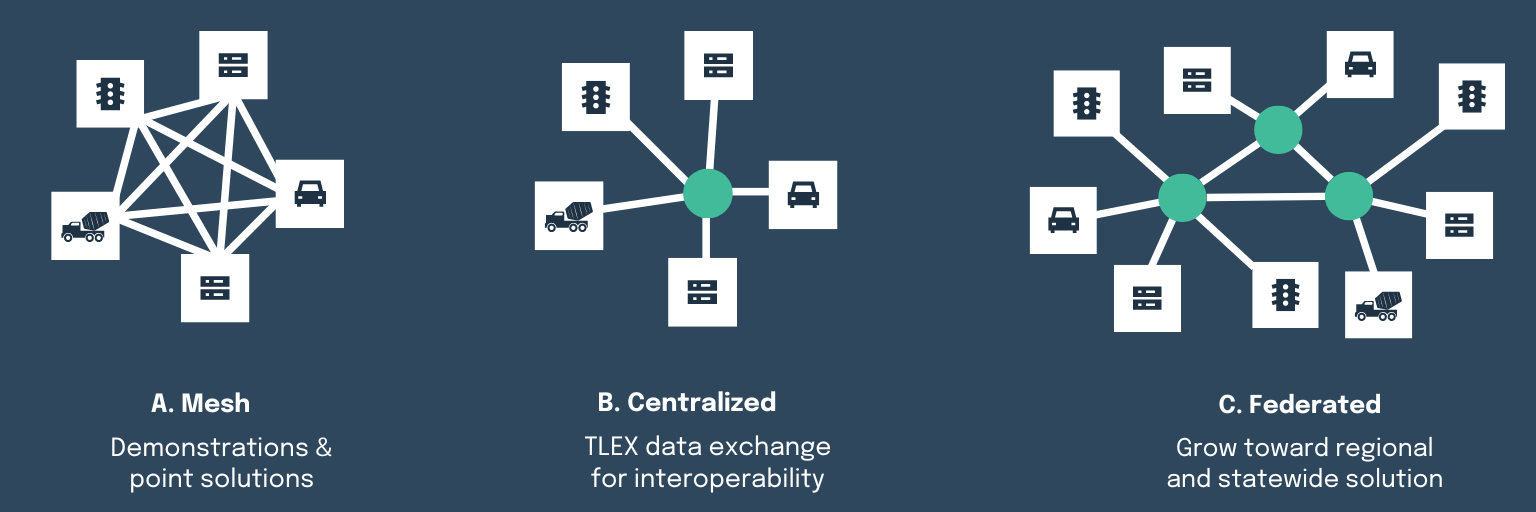How does TLEX provide interoperability?
29 Jul 2024[Whitepaper]
Easily enable scalability and multi-jurisdiction capability
TLEX is a proven SaaS-based foundation for digital infrastructure and connected mobility. It provides interoperability and reduces the risk of vendor lock-in through its compliance with open standards, flexible architecture, and innovative maintenance.
Road authorities, agencies and governments can easily enable the scale and multi-jurisdiction capability using the Traffic Live Exchange (TLEX) platform from Monotch. Once you add a SaaS interoperability layer to your infrastructure, it is a fast course of action.
TLEX delivers on interoperability, scalability, and data capture goals while equipping your project with governance and quality control features to work across jurisdictions and with necessary security and privacy.

Vision of interoperability
Monotch strongly believes that a connected transport/mobility world is needed to solve today’s challenges. Industry and public partners must work together on this, as it is an eco-system effort. Open solutions and interoperability are crucial to realising this vision. Therefore, our solutions fully support this vision and ensuring interoperability is at the heart of product design and service operation.
A digital infrastructure and connected mobility platform
Demonstration systems and point solutions often function in isolation, showcasing specific functionalities without addressing broader goals at scale. As more stakeholders or use cases are added, integration becomes complex, resulting in a mesh network (A).
TLEX (B) simplifies this by allowing stakeholders to connect once, making data accessible for multiple purposes based on permissions. Centralised instances can then be federated (C) to include more agencies or use cases, moving towards a comprehensive regional or national system.

Interoperable in many ways
To get a genuinely interoperable system available as plug-and-play, we ensure that our software ticks all the boxes.
Our TLEX:
- complies with open standards for data exchange interfaces and supports multiple interface options.
- supports a broad range of international message/payload types.
- service architecture allows for integration with customers’ systems or replacement of specific components with components from other suppliers.
- provides flexibility in deployment, including usage in private cloud environments, direct deployment in Azure, AWS, or Google tenants, and on-premise deployment.
- guarantees continued compliance with interface and message standards and interoperability with third-party products.
- has necessary ESCROW arrangements to mitigate non-technical risks, including bankruptcy and transition of services to an alternative supplier.
We now offer a free whitepaper for download that details the interoperability of the most advanced platform for connected mobility and digital infrastructure on the market.






